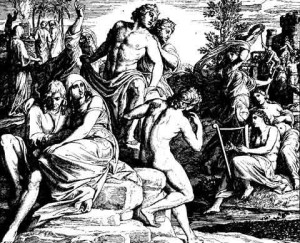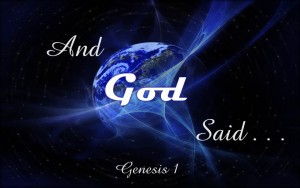In my last post I addressed the “sons of God” from the perspective of Genesis  6:1-4. But what about the phrase “sons of God” as it is found in other biblical texts. For example, who are the “sons of God” in Job 1:6; 2:1; and 38:7? This is an important question, but first a quick word about biblical interpretation (hermeneutics) .
6:1-4. But what about the phrase “sons of God” as it is found in other biblical texts. For example, who are the “sons of God” in Job 1:6; 2:1; and 38:7? This is an important question, but first a quick word about biblical interpretation (hermeneutics) .
One basic principle of biblical interpretation is to allow the clearer passages in the Bible to interpret the less clear passages in the Bible. In other words, as we saw in my last post about “sons of God,” the sons of God in Genesis 6 are not likely angels since the Scriptures explicitly teach that angels neither marry nor are they given in marriage (Matthew 22:30).
But there is a second principle of biblical interpretation that is also important. Context is king. Just as a realtor cries out, “Location, location, location,” so, too, when we read the Bible, we ought to cry out, “Context, context, context.” In other words, just because a word or phrase is translated or means one thing in one passage, it does not follow that the same word or phrase means the same thing in another passage. We must allow the context of the passage determine its meaning, and when the context isn’t clear, we allow passages that are clearer to help us understand. Allow me to illustrate with some English sentences.
“The board of directors voted to approve the new project.”
“We need to board up the windows before the hurricane makes landfall.”
These are just two simple examples of how the word “board” can be used in a sentence. No native English reader would think that these two uses of the word “board” were referring to the same thing. It’s the same word, but the context determines its meaning. Now, back to our discussion about “sons of God.”
The phrase “sons of God” is used a total of five times in the Old Testament and five times in the New Testament. Here are the verses (all verses are from the ESV). [NOTE: There is one textual variant in Deuteronomy 32:8 that is translated in the ESV as “sons of God.” All other major translations have “sons of Israel.”]
Genesis 6:2 “the sons of God saw that the daughters of man were attractive. And they took as their wives any they chose.”
Genesis 6:4 “The Nephilim were on the earth in those days, and also afterward, when the sons of God came in to the daughters of man and they bore children to them. These were the mighty men who were of old, the men of renown.”
Job 1:6 “Now there was a day when the sons of God came to present themselves before the LORD, and Satan also came among them.”
Job 2:1 “Again there was a day when the sons of God came to present themselves before the LORD, and Satan also came among them to present himself before the LORD.”
Job 38:7 “when the morning stars sang together and all the sons of God shouted for joy?”
Matthew 5:9 “Blessed are the peacemakers, for they shall be called sons of God.”
Luke 20:36 “for they cannot die anymore, because they are equal to angels and are sons of God, being sons of the resurrection.”
Romans 8:14 “For all who are led by the Spirit of God are sons of God.”
Romans 8:19 “For the creation waits with eager longing for the revealing of the sons of God.”
Galatians 3:26 “for in Christ Jesus you are all sons of God, through faith.”
The context of some of these passages tell us straightforwardly that the “sons of God” are Christians (e.g., Romans 8:14 and Galatians 3:26) or at least human beings (Genesis 6:2, 4) while the context of other passages indicates that the “sons of God” are something other than Christians or humans beings (e.g., Job 1:6; 2:1). Job is clearly saying that these “sons of God” are a type of angelic being.
So, when reading your Bible, always remember! CONTEXT, CONTEXT, CONTEXT! As D. A. Carson has said, “A text without a context becomes a pretext for a proof text!”
For His Glory,
Pastor Brian


